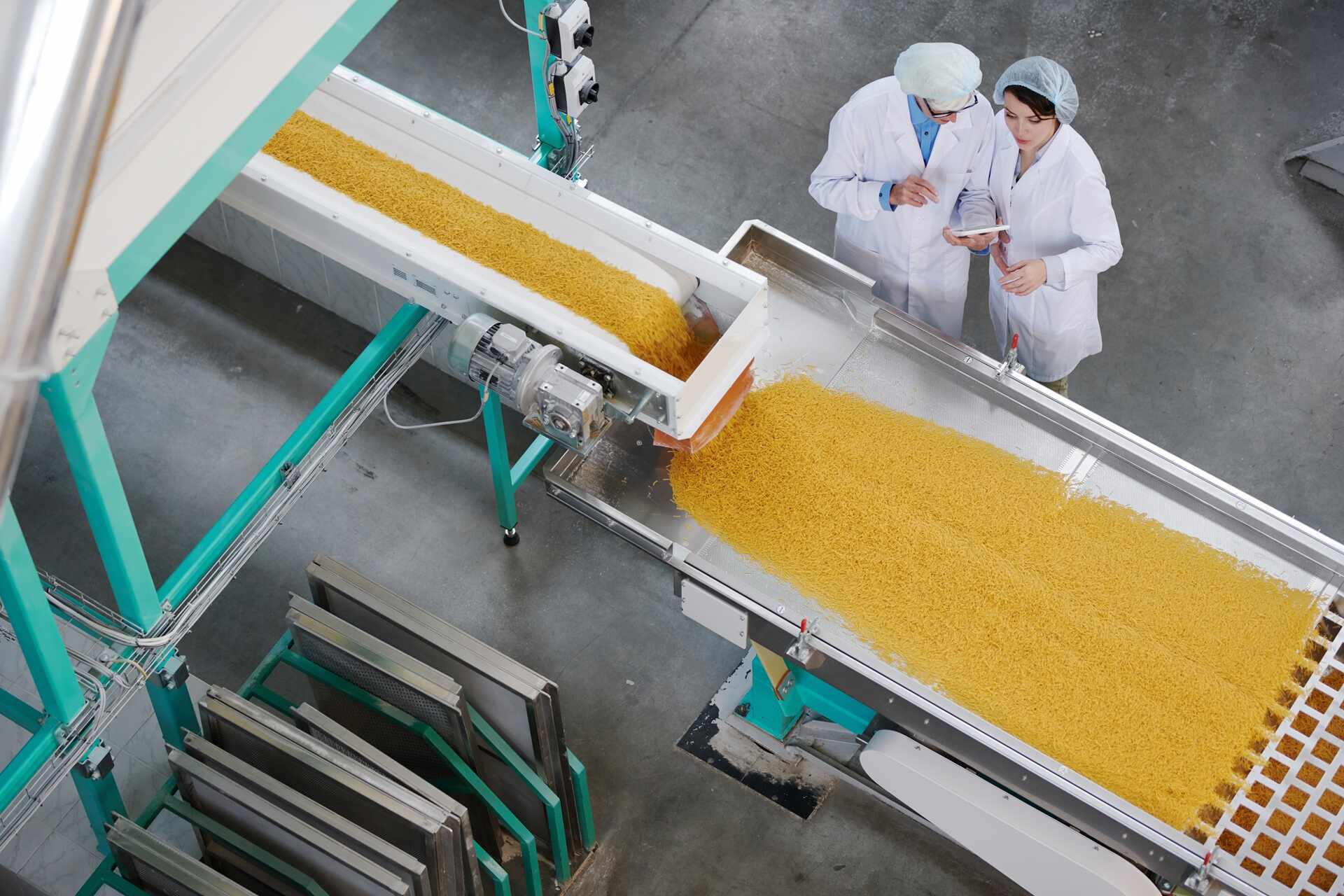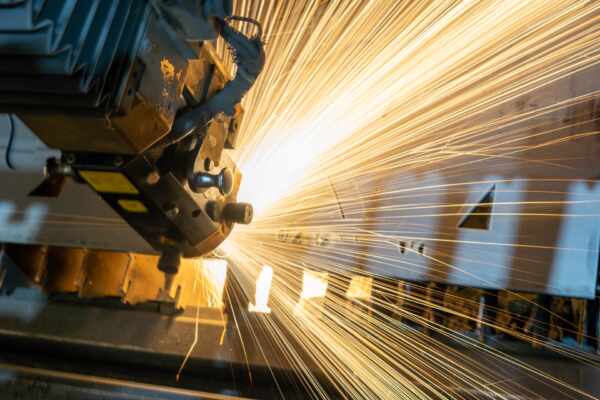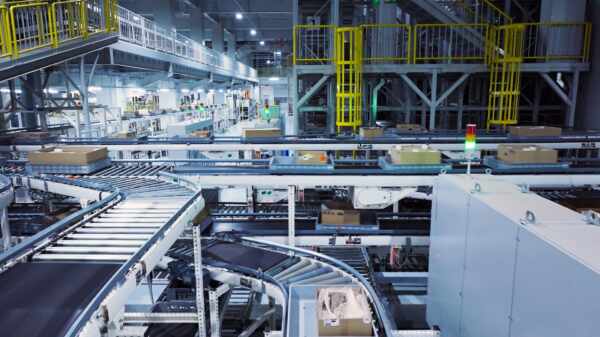Efficient and thorough conveyor belt cleaning is a vital aspect of maintaining a hygienic and productive working environment. Without regular and effective cleaning practices, your conveyor belt system can harbour contaminants, wear down faster, and negatively impact your operation’s efficiency.
Industries like food manufacturing, pharmaceuticals, and other hygiene-sensitive sectors particularly rely on outstanding conveyor belt cleanliness to protect product quality and ensure regulatory compliance.
In this comprehensive guide, we will explore various conveyor belt cleaning techniques that can help maintain impeccable hygiene while enhancing the efficiency and reliability of your conveyor belt system.
Our aim is to equip you with the knowledge, insights, and practical solutions necessary to implement thorough and effective cleaning practices that will not only safeguard your facility and products but also contribute to the longevity and optimal performance of your conveyor belt system.
As conveyor belt system experts, we understand the importance of cleanliness for your operation’s success. By uncovering the most efficient cleaning methods and innovative solutions, we help you create a more hygienic, efficient and cost-effective conveyor belt system.
Choosing the Right Conveyor Belt Cleaners
Selecting the most suitable conveyor belt cleaners for your specific operation is crucial for ensuring optimal cleaning performance. Different types of belt cleaners exhibit varying degrees of cleaning effectiveness, depending on factors like the conveyed material, belt type, and environmental conditions. Some of the common conveyor belt cleaners include:
- Primary Cleaners: Primary cleaners are typically installed on the head pulley, removing coarse and bulk materials from the belt surface. The scraper blade’s design varies, ranging from polyurethane or carbide tipped blades to tungsten or ceramic versions. Consider your operation’s specific requirements when selecting a primary cleaner.
- Secondary Cleaners: Secondary cleaners, usually fitted after the primary cleaner, provide further belt cleaning by removing any residue left by the primary cleaner. With a range of options like tungsten and polyurethane blades, brush cleaners and urethane wipers, choose the secondary cleaner that accommodates your belt type and material.
- Tertiary Cleaners: Tertiary cleaners offer the final stage of belt cleaning and are designed to tackle the remaining residue for maximum belt cleanliness. They are often installed on the return side of the belt and can include a combination of brush or blade cleaners. Assess your facility’s cleaning needs when deciding on the tertiary cleaner’s configuration.
Factors Influencing Conveyor Belt Cleaning Performance
To achieve optimal conveyor belt cleaning results, it’s essential to understand the factors that influence cleaning performance. Some of the major factors impacting cleaning efficacy include:
- Conveyor Belt Material and Structure: The material and structure of your conveyor belt play a significant role in determining the appropriate cleaning solution. Steel belts, for instance, may require specialised cleaners, while modular plastic belts need appropriate cleaning techniques to preserve their integrity.
- Material Type and Characteristics: The product being conveyed and its characteristics, such as abrasiveness, adhesiveness, and moisture content, will impact the cleaning techniques and solutions you may need. Tailor your cleaning methods to cater to the specific requirements of the conveyed material.
- Environment and Operating Conditions: Environmental factors like temperature, humidity, and potential chemical exposure can all influence the choice of conveyor belt cleaning solutions. Select cleaners and cleaning techniques that can withstand your facility’s operating conditions.
Effective Conveyor Belt Cleaning Techniques
Implementing various cleaning techniques can enhance the hygiene and efficiency of your conveyor belt system. Here are some proven cleaning methods to consider:
- Manual Cleaning: Manual cleaning involves facility staff using handheld tools and cleaning agents to remove dirt and debris from belts. This method is suitable for smaller-scale operations and for cleaning hard-to-reach areas that automated systems may miss. Regular training of staff is crucial to ensure proper manual cleaning practices that maintain belt hygiene without damaging the belt.
- Dry Cleaning Techniques: Dry cleaning techniques utilise compressed air, steam, or brushes to remove contaminants from the conveyor belt surfaces without using water or harsh chemicals. This method is advantageous in industries where water usage or wastewater disposal are of concern or where certain conveyed materials require dry environments.
- Wet Cleaning Techniques: Wet cleaning employs water, detergents, and brushes to clean the belt effectively. This method can provide thorough cleaning results and is particularly suitable for heavy-duty conveyors and those used in food processing applications. Ensure proper drying processes are in place to minimise the risk of water-related belt damage.
- CIP (Clean-in-Place) Solutions: Clean-in-Place systems enable conveyor belt cleaning without requiring the removal of parts or components. These automated systems use a combination of water, chemicals, and brushes to deliver consistent and efficient cleaning results while minimising downtime and manual intervention.
Preventative Measures for Improved Conveyor Belt Cleanliness
In addition to implementing effective cleaning techniques, facilities should also adopt preventative measures to maintain conveyor belt cleanliness, such as:
- Spillage Control: Control and minimise material spillage to prevent unnecessary dirt and debris buildup on your conveyor belt, leading to more frequent and intensive cleaning requirements.
- Regular Maintenance: Schedule regular maintenance of your conveyor belt system to address issues like belt misalignment or idler wear, both of which can contribute to poor belt cleanliness and inefficiency.
Conclusion
Maintaining a clean conveyor belt system is vital for keeping your facility hygienic and optimising its overall efficiency and performance. By selecting the right cleaning solutions, employing various cleaning techniques, and adopting preventative measures, you can achieve exceptional belt cleanliness while prolonging your conveyor belt system’s lifespan. Remember that working with industry experts can offer valuable insights and support, helping you implement best practices to ensure your operation’s success.
Are you looking for ways to improve the hygiene and efficiency of your facility’s conveyor belt system? Look no further than Change Parts Pty Ltd! Our conveyor belt cleaning solutions are designed to help you maintain a clean and safe work environment while improving the efficiency of your production process. Contact us today to learn more about our cleaning techniques and how we can help keep your facility running smoothly. Let us help you take the first step towards a cleaner and more efficient operation.




